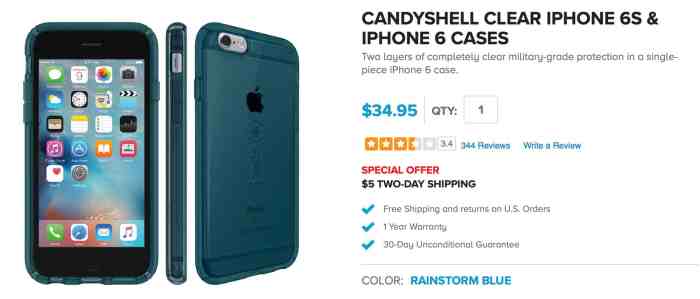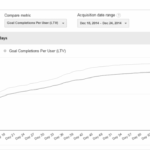Write better product descriptions sets the stage for a detailed look at crafting compelling product listings. This guide dives deep into understanding your audience, highlighting key features, and emphasizing benefits to create descriptions that convert.
From crafting clear and concise language to effectively using visuals and A/B testing, we’ll cover all the essential elements for transforming your product descriptions from bland to brilliant. This is a complete guide that covers every aspect of writing effective product descriptions.
Understanding Product Descriptions
Product descriptions are more than just lists of features; they are the crucial bridge between a product and a potential customer. A well-crafted description can spark interest, answer questions, and ultimately drive sales. A poorly written description, on the other hand, can lead to lost opportunities and frustrated customers. This section delves into the intricacies of effective product descriptions, exploring best practices, common pitfalls, and various writing styles.Effective product descriptions are key to online success.
They need to be compelling enough to entice a customer to click, informative enough to answer their questions, and persuasive enough to encourage a purchase. This understanding is essential for maximizing the potential of any product listing.
Effective Product Description Examples
A good product description immediately conveys the product’s value proposition. Consider these examples:
- Example 1 (Clothing): “This stylish, lightweight jacket is perfect for layering. Its breathable fabric keeps you comfortable in any weather, while the water-resistant finish protects you from light showers. Available in sizes S-XL, this versatile jacket is ideal for both everyday wear and outdoor adventures.” This description highlights key features, benefits, and target use cases.
- Example 2 (Electronics): “Experience seamless multitasking with the new ProPad tablet. Equipped with a high-resolution display and a powerful processor, the ProPad effortlessly handles complex tasks. Its long-lasting battery ensures hours of uninterrupted productivity. Upgrade your workflow today!” This example focuses on the benefits and the user experience.
- Example 3 (Food): “Indulge in the exquisite taste of our artisanal sourdough bread. Baked fresh daily with organic ingredients, each loaf is a testament to our commitment to quality. Perfect for sandwiches, toast, or simply savoring on its own, this bread is a must-try for any food enthusiast.” This description appeals to the senses and evokes a sense of experience.
Key Elements of an Effective Description
Effective product descriptions share several key elements. These elements ensure clarity, engagement, and a positive user experience.
- Conciseness: Avoid jargon and unnecessary details. Get straight to the point and highlight the most important features and benefits.
- Clarity: Use simple, easy-to-understand language. Avoid ambiguity and ensure that the description accurately reflects the product.
- Uniqueness: Emphasize what sets the product apart from competitors. Highlight its unique features and benefits.
- Visual Appeal: Use descriptive language to create a mental image for the reader. Paint a picture of the product and its potential uses.
Importance of Clear and Concise Language
Clear and concise language is essential for conveying information effectively. Ambiguous or overly technical language can confuse potential customers and deter them from making a purchase.
Crafting compelling product descriptions is key to boosting sales. Understanding how to write better descriptions goes hand-in-hand with optimizing your SEO for a conversion funnel. For example, focusing on relevant keywords and clear calls to action, as well as ensuring your descriptions are easily digestible for search engines and potential customers, is crucial. A strong understanding of SEO for conversion funnel principles can significantly improve your results.
Ultimately, great product descriptions are a vital part of a successful online sales strategy.
- Example: Instead of saying “This product boasts cutting-edge technology,” use “This product features a revolutionary new design.” This example replaces overly technical jargon with more accessible language.
Best Practices for Engaging Product Descriptions
Following best practices can significantly enhance the effectiveness of your product descriptions.
- Use strong action verbs: Words like “experience,” “discover,” and “explore” can make your descriptions more dynamic and engaging.
- Include customer testimonials: Social proof can build trust and credibility.
- Optimize for search engines (): Use relevant s to improve visibility in search results.
- Highlight key benefits: Focus on how the product solves a problem or improves the customer’s life.
Common Mistakes to Avoid
Several common mistakes can undermine the effectiveness of your product descriptions.
- Generic descriptions: Avoid descriptions that could apply to any product.
- Poor grammar and spelling: Maintain a professional tone and avoid errors.
- Exaggeration or misleading claims: Be honest and avoid making unrealistic promises.
- Lack of specific details: Provide sufficient information to address customer questions.
Comparing Writing Styles for Product Descriptions
Different writing styles can cater to specific audiences and product types.
| Style | Characteristics | Examples |
|---|---|---|
| Formal | Professional, precise, and objective. | “The device features a robust construction and superior performance.” |
| Informal | Friendly, conversational, and engaging. | “This gadget is super easy to use and makes your life so much easier!” |
| Technical | Detailed, specific, and jargon-rich. | “The product utilizes a 3.5GHz processor and a 128GB SSD for unparalleled speed.” |
Highlighting Product Features

Crafting compelling product descriptions hinges on effectively showcasing the features that set your offerings apart. This involves more than simply listing specifications; it’s about translating technical details into benefits that resonate with potential customers. This guide dives into the strategies for highlighting product features in a way that drives conversions.Understanding your target audience is crucial. Knowing their needs, desires, and pain points allows you to tailor feature descriptions to address those specific concerns.
A product’s “features” are the tangible characteristics, while “benefits” are the advantages derived from those features. Effective descriptions bridge the gap between these two.
Key Product Feature Artikel Template
A structured approach to outlining product features is essential. This template provides a framework for organizing your thoughts and ensuring completeness.
Want to craft product descriptions that truly pop? Understanding how psychology influences website design is key. Check out these 5 psychology based design tips to improve engagement on your website 5 psychology based design tips to improve engagement on your website to see how strategically using color, layout, and even font choices can significantly impact how customers perceive your products.
Ultimately, incorporating these principles will lead to more compelling product descriptions that drive conversions.
- Product Name: (e.g., “Eco-Friendly Backpack”)
- Target Audience: (e.g., “Eco-conscious students and professionals”)
- Key Features: (List all key features, e.g., water-resistant material, adjustable straps, durable zippers)
- Benefit of each feature: (Explain how each feature addresses customer needs, e.g., “Stay dry in light rain,” “Comfortable carrying experience,” “Long-lasting use”)
- Supporting details/evidence: (Data, testimonials, or other supporting information that backs up the claims)
- Visuals/Illustrations: (Specify images or videos needed to complement the description)
Using Strong Verbs and Active Voice
Using strong verbs and active voice is paramount to creating engaging descriptions. Passive voice can make your writing sound weak and indirect.
- Example of Passive Voice: “The product is designed with a durable zipper.”
- Example of Active Voice: “Our product features a durable, reinforced zipper.”
Employing action verbs like “features,” “offers,” “provides,” and “enables” makes the description more dynamic and engaging.
Effective Adjectives for Product Benefits
Selecting the right adjectives is critical to emphasizing the advantages of your product.
- Durable: (For products designed for long-term use)
- Lightweight: (For portable products)
- Stylish: (For aesthetically-pleasing products)
- Convenient: (For products that make tasks easier)
- Innovative: (For products with unique features)
Different Presentation Methods
Various formats can be used to present product features. Consider the best format for your specific product and audience.
- Bullet Points: Concise and easy to read, perfect for highlighting key features quickly.
- Paragraphs: Ideal for providing more in-depth explanations and weaving a narrative around the features.
- Tables: Useful for presenting data or comparing different features across various product models or versions.
Linking Features to Customer Needs
Connecting features to customer needs is crucial for showcasing value. Consider the customer’s perspective when describing features.
- Example: Instead of saying “This phone has a 12MP camera,” say “Capture stunning photos with our 12MP camera, perfect for capturing precious memories.”
Categorizing Product Features
A clear categorization of features helps customers quickly understand the product’s value proposition.
| Category | Examples |
|---|---|
| Performance | Speed, efficiency, battery life |
| Design | Aesthetics, ergonomics, materials |
| Functionality | Features, capabilities, ease of use |
Emphasizing Product Benefits: Write Better Product Descriptions
Turning a product’s features into compelling benefits is crucial for effective marketing. Features describe
- what* a product does, while benefits highlight
- how* it improves the customer’s life or solves their problems. Focusing on the latter is key to converting browsers into buyers. Understanding this fundamental difference allows for crafting descriptions that resonate with the target audience, driving sales and fostering brand loyalty.
Effective product descriptions move beyond technical specifications and delve into the emotional and practical advantages a product offers. They paint a picture of how the product enhances a customer’s experience and fulfills their needs, making the purchase decision easier and more appealing.
Common Product Benefits
Understanding the common benefits associated with various products is crucial for crafting compelling descriptions. These benefits often address fundamental human needs and desires, such as convenience, time-saving, cost-effectiveness, and enhanced performance. Identifying the most relevant benefits allows you to highlight how your product uniquely addresses these needs.
- Convenience: Streamlining tasks, reducing effort, and making processes easier.
- Time-saving: Reducing the time required for a task, allowing for more productive use of time.
- Cost-effectiveness: Providing comparable value for a lower price point or reducing overall costs.
- Enhanced performance: Improving speed, efficiency, or quality compared to existing solutions.
- Improved safety: Providing a more secure or safer experience.
- Increased efficiency: Optimizing processes to improve productivity and output.
- Enhanced aesthetics: Improving the appearance or visual appeal.
- Status or prestige: Associating the product with a certain social standing.
- Problem solving: Directly addressing a customer’s specific issue or pain point.
Connecting Features to Benefits
Successfully linking product features to customer benefits is paramount. It’s not enough to simply list features; you need to demonstrate how those features translate into tangible improvements for the buyer. Consider the customer’s perspective and how each feature satisfies their needs or desires.
- Example: A feature like “automatic shut-off” in a coffee maker might translate into the benefit of “peace of mind,” knowing the machine won’t overheat or waste energy.
- Another example: A feature like “lightweight construction” in a backpack could translate into the benefit of “reduced strain on the back,” making the backpack more comfortable to carry over long distances.
Approaches to Highlighting Value Proposition
Several approaches can effectively highlight the value proposition of a product. Choosing the right approach depends on the specific product and target audience.
- Problem-Solution Approach: Clearly defining the customer’s problem and then demonstrating how the product solves it.
- Benefit-Driven Approach: Focusing on the advantages and benefits the product provides, showcasing how it improves the customer’s life.
- Comparative Approach: Highlighting the product’s advantages compared to competitors, demonstrating superior value.
Writing Compelling Benefit-Driven Descriptions
Crafting benefit-driven descriptions involves more than simply listing features. It requires understanding the customer’s needs and desires, and articulating how the product fulfills them.
“Instead of saying ‘This phone has a high-resolution camera,’ say ‘Capture stunning photos and videos with our advanced camera.'”
Emotional Language and Storytelling
Incorporating emotional language and storytelling can significantly enhance product descriptions. These techniques help create a connection with the customer on a deeper level, evoking feelings and building trust.
- Example: Instead of just saying “This car is fast,” describe the feeling of exhilaration and freedom it provides. Use vivid language to create a sense of adventure.
Using Storytelling to Enhance Descriptions, Write better product descriptions
Weaving a narrative around the product can make the description more engaging and memorable. Stories can connect with the customer on an emotional level, fostering a stronger connection with the brand.
Features vs. Benefits Table
| Feature | Benefit |
|---|---|
| High-resolution camera | Capture stunning, detailed photos and videos |
| Lightweight design | Comfortable to carry for extended periods |
| Durable materials | Long-lasting product that withstands daily use |
| Automatic shut-off | Ensures safety and prevents energy waste |
Using Visual Elements Effectively
Bringing your product to life is crucial for online success. High-quality visuals, from images to videos, are vital in capturing attention and conveying product details effectively. This goes beyond just showcasing the item; it’s about creating an immersive experience that allows potential customers to connect with your product on a deeper level. Visuals are a powerful tool for enhancing descriptions and driving conversions.
High-Quality Images and Videos
Visuals are the cornerstone of effective product descriptions. High-quality images and videos offer a tangible representation of your product, overcoming the limitations of text-only descriptions. Images showcase the product’s aesthetics, materials, and functionality, while videos demonstrate its use and benefits in action. This combination of static and dynamic elements provides a comprehensive understanding, significantly improving the customer’s experience.
Want to craft product descriptions that truly pop? Learning to write better product descriptions is crucial for online success. To level up your game, check out get your mba in seo with these 10 guides and 5 courses – these resources will give you the SEO know-how to optimize your descriptions for search engines and attract more customers.
Ultimately, mastering SEO principles is key to writing descriptions that convert.
Image Optimization for Product Pages
Optimizing images for product pages is paramount for both user experience and search engine visibility. Large, high-resolution images are crucial for showcasing intricate details, but they can also slow down page load times. Compressing images without sacrificing quality is key. Using appropriate file formats (like JPEG or WebP) and optimizing dimensions for different devices are critical steps in image optimization.
This ensures smooth loading across various screens, maintaining user engagement. Furthermore, optimizing image file names and alt text is crucial for search engine crawlers to understand the image content.
Captions and Alt Text
Captions and alt text are essential for accessibility and . Captions provide additional context, describing specific details or highlighting key features. Alt text, crucial for screen readers and image-only viewing, should concisely describe the image’s content. For example, an image of a smartphone should have alt text like “A sleek smartphone with a vibrant display and a modern design.” This improves the overall experience for users with disabilities and helps search engines understand the image’s relevance.
Product Demonstrations
Product demonstrations in video format are powerful tools for showcasing product use and benefits. These can include a “how-to” video showcasing the product’s functionalities or a short explainer video highlighting key benefits. A demonstration allows customers to visualize the product in action, increasing their confidence in the purchase. For instance, a video demonstrating the assembly of a furniture product can dramatically improve trust in the quality and ease of use.
Comparison of Visual Content Types
| Visual Content Type | Impact on Descriptions | Example |
|---|---|---|
| High-resolution product images | Showcase intricate details, build trust, and enhance understanding. | A clear image of a watch showcasing its intricate craftsmanship. |
| Product videos | Demonstrate product functionality and benefits in action. | A video of a blender demonstrating its speed and blending capabilities. |
| 360° product views | Provide a comprehensive view of the product from all angles, increasing engagement. | A 360° view of a handbag, allowing customers to see it from every perspective. |
| Animated GIFs | Quickly demonstrate product features, often with humor and creativity. | An animated GIF of a mouse demonstrating its precision and ease of use. |
Integrating Visuals with Written Descriptions
A well-integrated visual approach strengthens the written description. Visuals should complement, not replace, the written text. Images and videos should be strategically placed within the description to highlight key features and benefits. Consider placing high-resolution images alongside detailed product descriptions to enhance the user experience and provide a comprehensive understanding of the product. The visual content should guide the user through the product, providing a smooth and enjoyable journey.
Ensuring Clarity and Conciseness

Crafting compelling product descriptions hinges on clear communication. Readers should effortlessly grasp the value of your product without getting bogged down in technical jargon or lengthy explanations. A concise, well-structured description builds trust and encourages purchase. This section delves into techniques for achieving that clarity and impact.
Avoiding Jargon and Technical Terms
Technical terms, while important for experts, can alienate a wider audience. Using overly complex language creates a barrier between your product and potential customers. Avoid industry-specific jargon unless absolutely necessary. If technical terms are unavoidable, always define them in plain language to ensure accessibility.
Simplifying Complex Information
Complex product features often require simplification. Instead of dense paragraphs of technical specifications, break down intricate details into smaller, digestible chunks. Use analogies, metaphors, or real-world examples to illustrate the product’s functionality. For example, instead of saying “proprietary algorithm,” say “our advanced system learns and adapts, like a human expert, to optimize your workflow.”
Using Clear and Concise Language
Precise language is key. Avoid vague or ambiguous terms. Use strong verbs and active voice to energize your descriptions. Each word should contribute directly to the message, eliminating unnecessary fluff. For example, instead of “The product is designed for easy use,” try “Effortlessly use this product.”
Removing Unnecessary Words and Phrases
Every word in a product description should serve a purpose. Identify and remove redundant phrases, clichés, and unnecessary adjectives. Focus on conveying the core benefits and features concisely. For example, instead of “The highly innovative and revolutionary new product is ideal for,” try “This revolutionary product is perfect for.”
Active Voice and Strong Verbs
Active voice and strong verbs elevate descriptions from passive to powerful. Active voice emphasizes the subject performing the action. Using strong verbs like “optimize,” “streamline,” “enhance,” and “transform” creates a more dynamic and engaging tone.
Concise vs. Verbose Descriptions
| Concise Description | Verbose Description |
|---|---|
| This powerful tool quickly identifies and fixes errors. | The product is designed with a sophisticated error detection and resolution system, resulting in rapid identification and correction of issues. |
| Experience seamless workflow management. | The system provides a smooth and effortless user experience for managing all aspects of your workflow. |
| Effortlessly create stunning visuals. | The application provides an intuitive and user-friendly interface that allows for the creation of high-quality visual assets with ease. |
This table highlights the difference between concise and verbose descriptions. Notice how the concise descriptions focus on the benefit and action, while the verbose descriptions include unnecessary words and phrases.
A/B Testing and Optimization
A/B testing is crucial for optimizing product descriptions. It allows you to compare different versions of your descriptions to determine which resonates best with your target audience. This iterative process helps refine descriptions, leading to increased conversions and a stronger customer experience. By consistently analyzing results and adjusting your approach, you can maximize the effectiveness of your product descriptions over time.Effective product descriptions are dynamic, constantly evolving based on audience feedback and performance data.
A/B testing provides the scientific method for this evolution, ensuring you’re always presenting the most persuasive and compelling copy.
A/B Testing Framework
A robust A/B testing framework for product descriptions should include careful planning, precise execution, and thorough analysis. This approach ensures you’re making data-driven decisions rather than relying on assumptions. Each variation should focus on a specific aspect of the description, such as headline, call-to-action, or product benefits. Isolate the variable to measure its impact accurately.
Key Metrics for Optimization
Tracking specific metrics is vital for evaluating the effectiveness of A/B tests. Conversion rate, click-through rate, bounce rate, and average order value are all important indicators. These metrics provide insights into how different descriptions affect user behavior and purchasing decisions. Analyze these metrics regularly to identify trends and patterns.
Analyzing Customer Feedback and Reviews
Customer feedback, both positive and negative, provides invaluable insights for optimizing product descriptions. Analyzing reviews allows you to understand what customers like and dislike about your descriptions. This understanding helps you tailor your descriptions to address common concerns and highlight key selling points.
The Role of User Experience (UX)
User experience plays a significant role in optimizing product descriptions. Clear, concise language, easy-to-understand formatting, and intuitive navigation are essential for a positive user experience. Prioritize a seamless reading experience and ensure your descriptions are easily scannable. Consider the customer journey from initial viewing to purchase.
Steps in an A/B Testing Process
| Step | Description |
|---|---|
| 1. Define Hypothesis | Clearly articulate the specific change you want to test (e.g., changing the headline). State the expected outcome, such as a higher click-through rate. |
| 2. Create Variations | Develop multiple versions of your product description. Each variation should differ by only one element. For example, one version might use a more formal tone, while another might use a more playful tone. |
| 3. Choose Metrics | Identify the key performance indicators (KPIs) you will track to measure the success of your test. These could include conversion rate, click-through rate, or time on page. |
| 4. Implement Test | Implement the A/B test on a specific subset of your target audience. Avoid influencing results through outside variables. |
| 5. Analyze Results | Carefully analyze the data collected from the test. Statistical significance is crucial for determining if the changes have a real impact. |
| 6. Iterate and Refine | Use the results of the test to improve your product description. Implement the changes that yield the best results and continue the A/B testing process to further optimize. |
Conclusion
In conclusion, crafting compelling product descriptions requires a multifaceted approach. By understanding your audience, highlighting key features and benefits, using visuals effectively, and optimizing for clarity, you can create descriptions that resonate with potential customers and drive sales. The journey to creating stellar product descriptions begins with understanding your audience and crafting a narrative that captures their attention.






